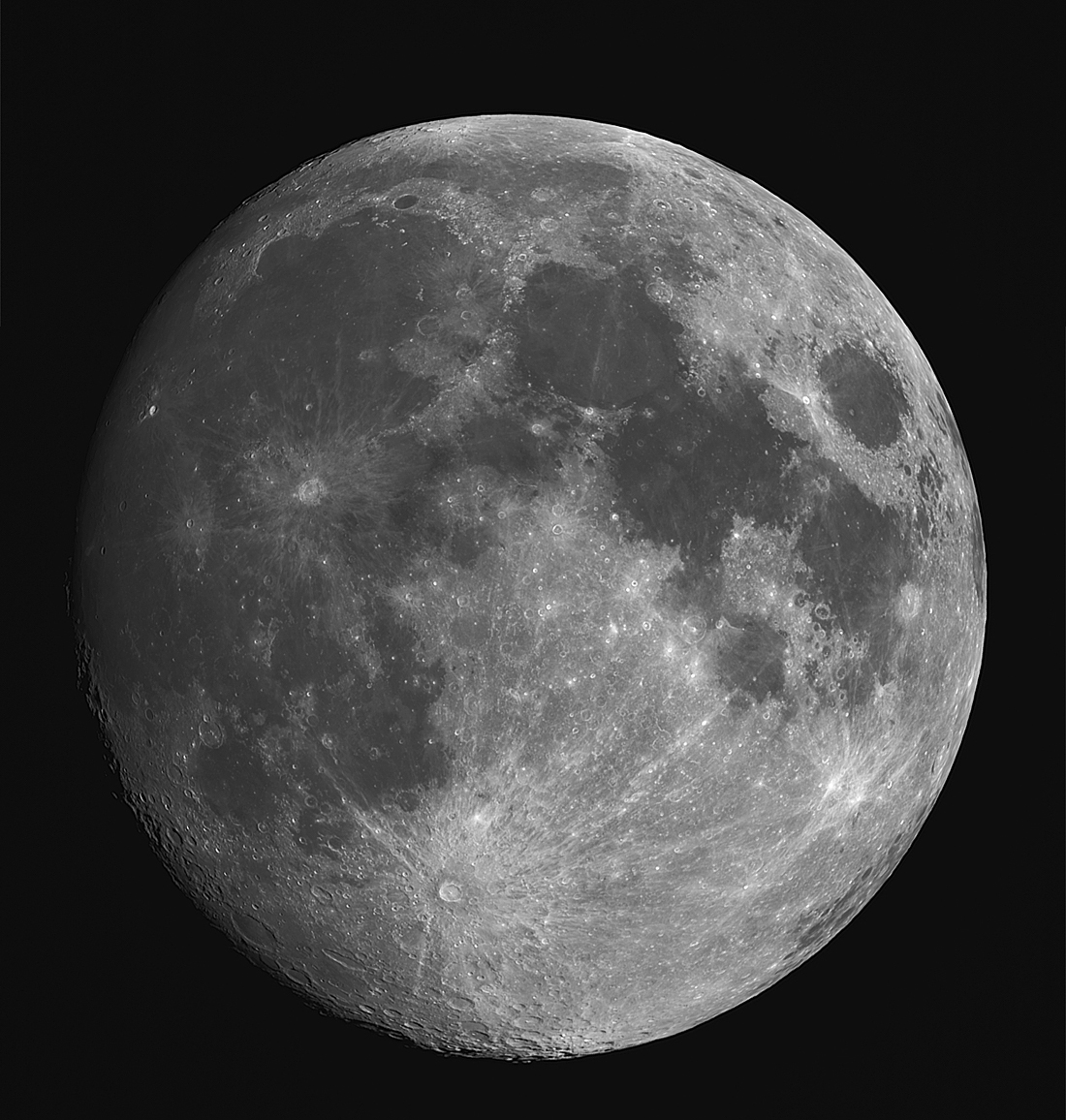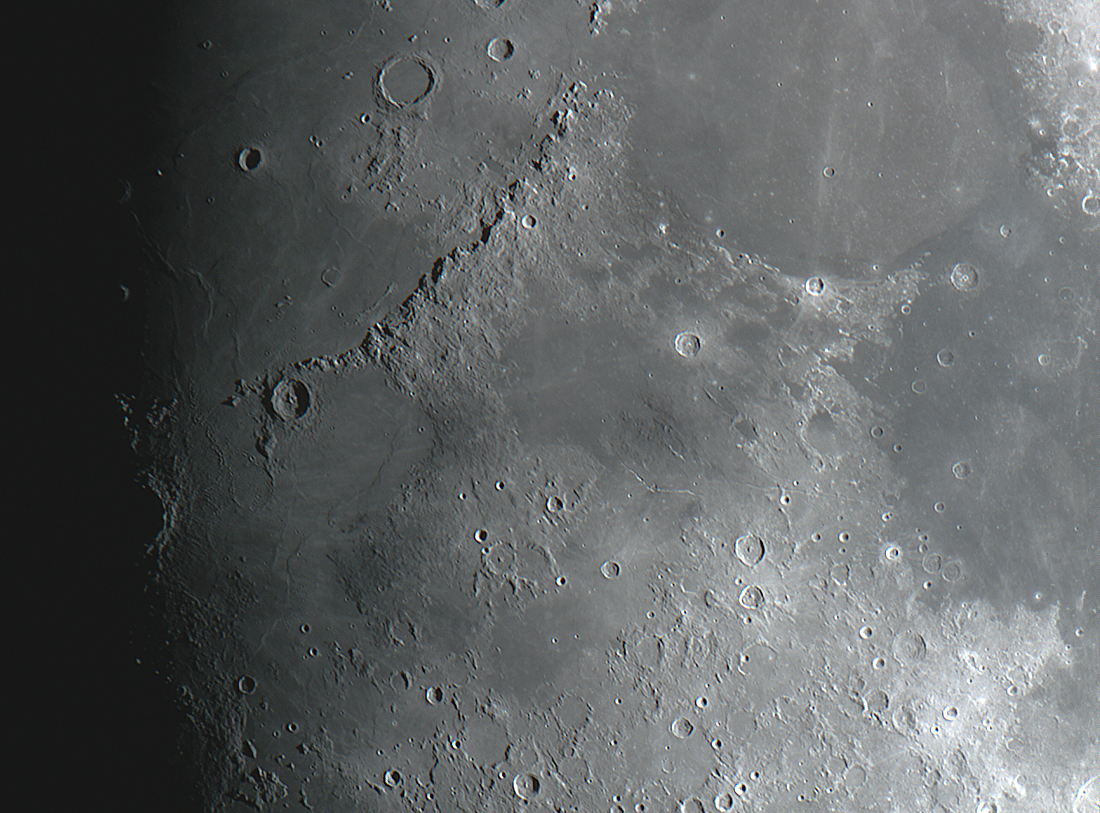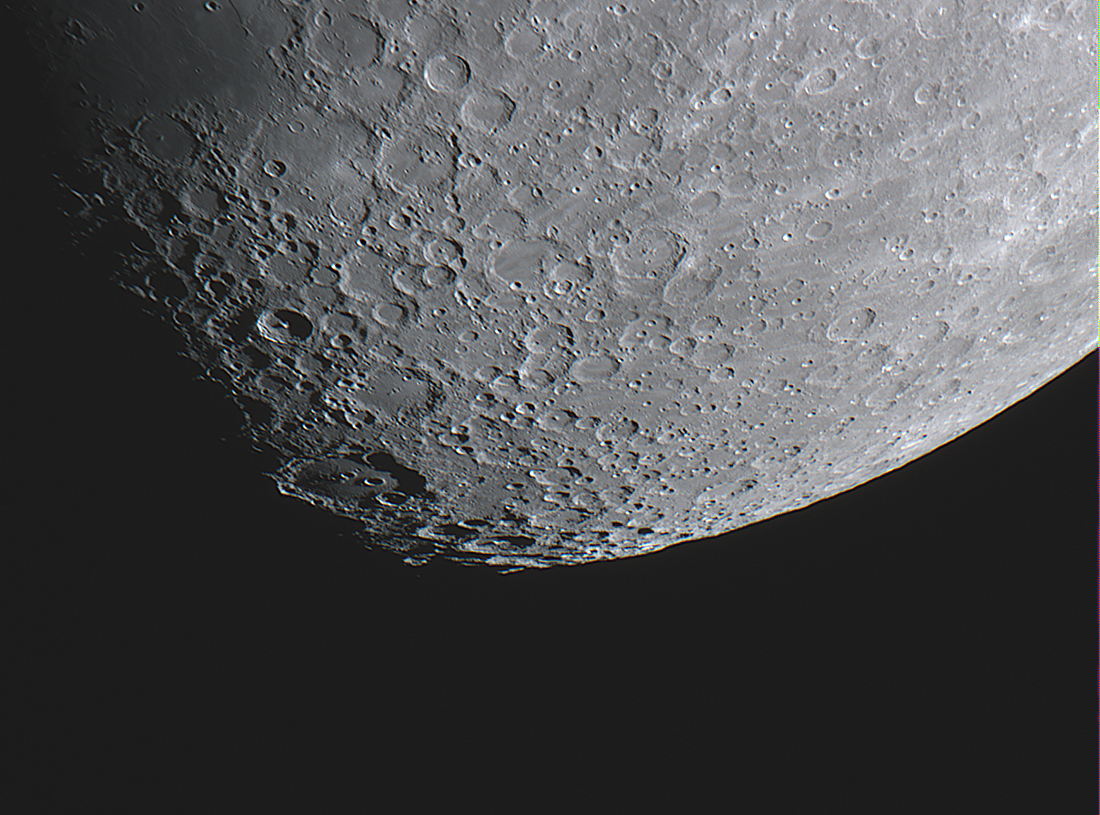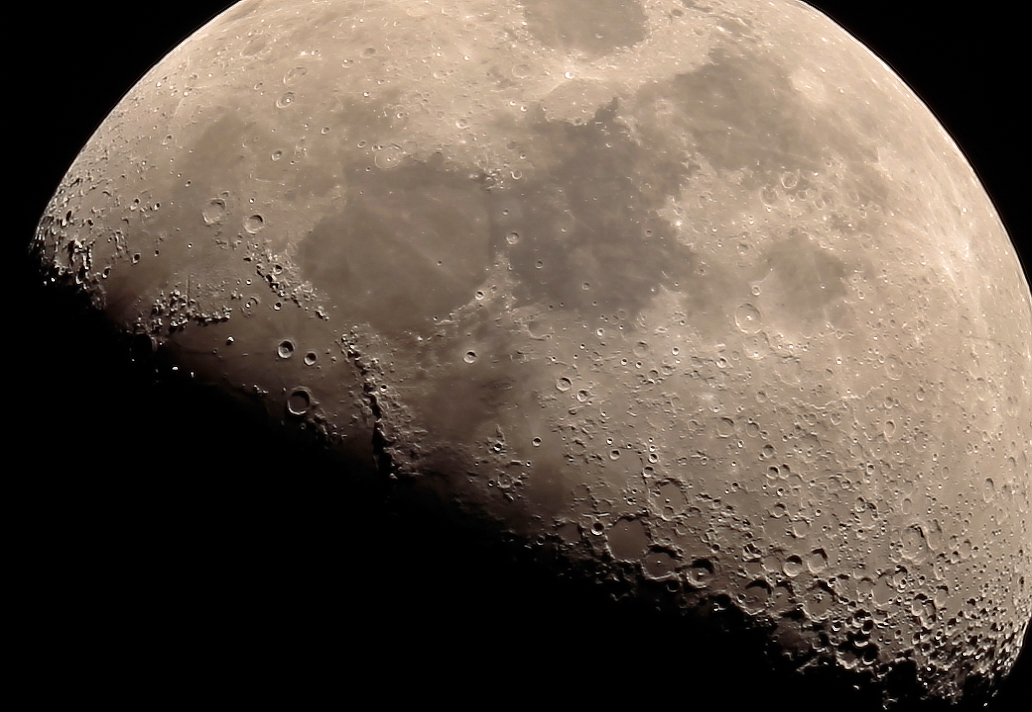| THE MOON |
 |
The Moon, from 8-5-2017, at a distance of approx 384,400 km, thought to have formed approximately 4.5 billion years ago. The large crater at the bottem is Tycho, with middle left, Copernicus. Technical info: |
 |
Technical info: |
|
 |
|
 |
Technical info: |
 |
|
|
 |
The Moon taken on 17-1-2016 with TS 80mm f6 APO triplet refractor and Canon 7D DSLR |